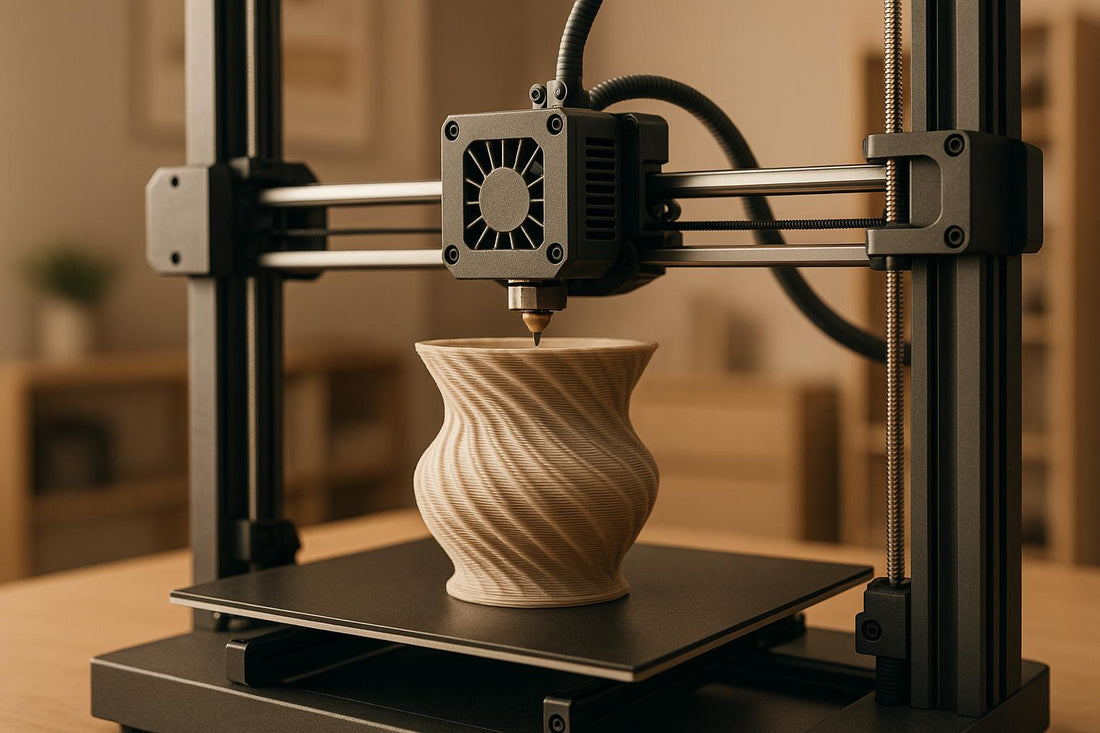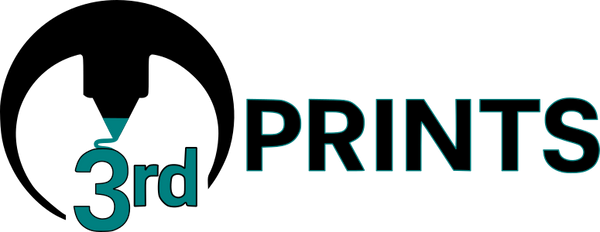
High-Resolution Printing: Speed vs. Quality Explained
High-resolution 3D printing is all about finding the right balance between speed and quality. Faster printing saves time but sacrifices detail and durability, making it ideal for prototypes or bulk production. On the other hand, slower, quality-focused printing delivers precise details and stronger products but takes longer and costs more.
Here’s the core idea: You can’t maximize speed, quality, and strength all at once. This trade-off, often called the "3D Printing Trinity", means you’ll need to prioritize based on your project’s needs:
- Fast Printing: Great for quick prototypes, functional items, or high-volume production. Expect visible layer lines, moderate strength, and lower costs.
- Quality-Focused Printing: Best for display pieces, custom orders, or customer-facing products. Offers smooth surfaces, sharper details, and better durability but requires more time and resources.
The right choice depends on your goals. For prototypes, speed may matter most. For final products, precision and durability take priority. Many manufacturers combine both approaches - quickly prototyping ideas, then refining the final product with quality settings.
Key takeaway: Decide what matters most - speed, quality, or strength - to meet your project’s goals effectively.
3D Printing: Fast or Slow? How to Determine the Correct Speed Settings for your 3D printer
1. Fast Printing Methods
Fast printing prioritizes speed over precision, making it a go-to choice for quick prototypes, bulk orders, or meeting tight deadlines.
Print Detail
When printing at high speeds, resolution and detail take a hit, resulting in rougher surfaces and visible layer lines. Items like dice, miniature bases, and keychains often show these imperfections. This happens because the printer has less time to carefully deposit material, leading to weaker layer adhesion and more noticeable lines. For gaming accessories like dice or bases, the functionality remains intact, but the finer details - especially in intricate designs like custom keychains or fidget toys - may lose their sharpness.
Production Time
One of the biggest perks of fast printing is how much it cuts down production time. By increasing print speeds, manufacturers can turn around orders more quickly, which is a game-changer for rapid prototyping or meeting urgent deadlines. For example, 3rd Prints, known for custom gaming accessories, can boost their output and meet customer demands on time. However, this speed often comes at the cost of reduced structural integrity.
Durability
The quicker deposition of material can weaken the bonds between layers, creating potential weak spots in items that are handled frequently. For functional gaming accessories, this might mean a higher chance of minor damage during regular use. On the other hand, decorative pieces or prototypes, which don’t endure as much wear and tear, are less impacted by this trade-off.
2. Quality-Focused Printing
Quality-focused printing emphasizes precision and detail, making it perfect for projects where every tiny element counts.
Print Detail
In quality printing modes, printers use finer layer heights to create smoother surfaces with barely noticeable lines. Imagine custom gaming dice with sharp engravings or intricate fidget toys that maintain their detailed geometric designs. The printer head moves methodically, ensuring each layer is placed with care.
This approach shines on curved surfaces and overhangs, producing smooth curves and clean bridges without the visible stepping you might see in faster print modes. For items like decorative keychains with fine text or small logos, this level of precision ensures every detail is clear and sharp. The trade-off? It takes more time to achieve this refined finish.
Production Time
Achieving top-tier quality comes at the cost of extra time. Slower speeds and additional passes mean longer print durations. For businesses like 3rd Prints, this requires careful planning and open communication with customers about delivery timelines - especially for custom orders demanding premium finishes. While it’s a slower process, the extended time often translates to better results and improved durability.
Durability
A slower, quality-focused approach doesn’t just enhance appearance - it can also improve durability. By depositing material at a deliberate pace, each layer bonds more effectively with the one below it. This stronger adhesion reduces weak points, making the final product less likely to crack or split. For gaming accessories or other items that see frequent use, this added durability is a major plus.
Cost Implications
Quality printing isn’t cheap. Longer print times mean higher electricity usage, increased wear on machines, and more material consumption (like additional supports or extra passes). Using premium filaments can also drive up costs. However, these expenses are often offset by greater customer satisfaction and fewer product failures, making the investment worthwhile in the long run.
sbb-itb-c5cd7d3
Pros and Cons
Choosing between faster printing and a more quality-focused approach comes down to what your project requires. These trade-offs tie directly into the "3D Printing Trinity" we touched on earlier.
Fast printing is perfect for rapid prototyping or meeting tight deadlines. It saves time and reduces costs but often compromises on surface finish and intricate details. This approach works well for functional items where minor imperfections are acceptable, though complex designs may show more visible layer lines.
On the other hand, quality-focused printing prioritizes refined details and durability, making it ideal for final products or display pieces. The downside? It takes longer and costs more, as it involves extended processing and often uses higher-grade materials.
The decision ultimately hinges on the purpose of your project. If you're working on functional prototypes, the speed of fast printing can be a game-changer. But for customer-facing items - like custom gaming accessories - the precision and polish of quality printing are essential.
Here's a quick comparison of the two approaches:
| Criteria | Fast Printing | Quality-Focused Printing |
|---|---|---|
| Print Detail | Visible layer lines; good for prototypes | Smooth surfaces; sharp details for a polished look |
| Production Time | Faster turnaround for quick iterations | Longer production times for optimal quality |
| Durability | Moderate strength; may have weak points | Stronger with better layer adhesion |
| Cost per Item | Lower costs due to reduced processing | Higher costs reflecting premium materials |
| Best Use Cases | Prototyping, functional testing, high-volume runs | Final products, display pieces, custom orders |
| Surface Quality | May need post-processing to smooth rough textures | Often ready-to-use with minimal finishing |
These trade-offs highlight the balancing act of the 3D Printing Trinity. At 3rd Prints, we aim to strike the perfect balance between speed and precision, ensuring every project meets your needs.
Conclusion
When it comes to high-resolution 3D printing, the speed versus quality debate isn’t about picking one over the other - it’s about identifying what your project truly needs. Fast printing shines when creating rapid prototypes or functional parts, while quality-focused printing is a must for items meant to impress customers or be put on display. Striking this balance is key to choosing the right method for any project.
Think about your end goal. If you’re working on functional prototypes, speed might take priority. On the other hand, items meant for customer interaction demand fine detail and precision. Many manufacturers use a hybrid approach - prototyping quickly to test ideas, then switching to high-quality settings for the final product. This strategy saves time without sacrificing the quality customers expect.
Every 3D printing project juggles the "trinity" of speed, quality, and cost. It’s impossible to maximize all three at once, so successful projects focus on the element that aligns best with their timeline, budget, and quality requirements.
While advancements in 3D printing continue to evolve, the trade-offs between speed and quality will likely remain a constant. By mastering this balance, you can meet production goals effectively and consistently deliver results that satisfy your customers.
FAQs
How can I choose between speed and quality for my 3D printing project?
Balancing speed and quality in 3D printing comes down to what your project demands. If you're working on a tight deadline, increasing the print speed can save valuable time, though it might compromise fine details and leave the surface finish less refined. On the flip side, slowing things down improves precision, strengthens layer adhesion, and delivers a smoother finish - perfect for detailed designs or when accuracy is a top priority.
Think about the complexity of your design, the material you're using, and whether the final piece is meant to be functional or visually striking. Finding the right mix of speed and quality ensures your 3D print aligns with your project’s goals.
What are the downsides of prioritizing speed over quality in high-resolution 3D printing?
When you push for faster 3D printing, there are often compromises to consider. Printing at higher speeds can weaken the bond between layers, leaving parts more susceptible to breaking or failing under pressure. It can also affect the surface finish, leading to rough textures and less-defined details.
Another challenge with speed-focused printing is managing heat. Faster speeds can cause overheating or inadequate cooling between layers, which might undermine the strength and stability of the finished piece. If your goal is durability and precision, sticking to a slower, more detail-oriented approach is typically the smarter route.
Can you combine fast prototyping with high-quality 3D printing for all projects?
Combining quick prototyping with top-notch 3D printing can be a smart strategy for many projects, but its effectiveness hinges on the project's specific demands. For instance, faster printing speeds or lower resolutions are ideal for early prototypes, while final or highly detailed versions benefit from slower, high-resolution settings.
This blended approach works particularly well for projects involving multiple design iterations. It lets you rapidly test and refine ideas before committing to a polished, final version. That said, for designs that are especially intricate or complex, starting with high-resolution settings from the get-go might be a better choice. The trick is to adapt the process to fit the unique needs of each project.
